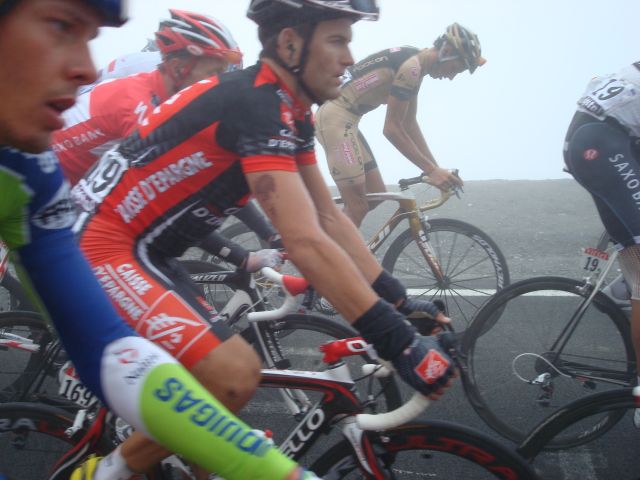
Rant’s Daniel Rosen asked the question “Will it ever be possible to have a Tour de France… that is completely free of doping?” I would answer that with a definitive no – not now, not ever. Professional cycling is an extreme sport that is practically synonymous with doping.
Steroid and doping expert Dr. John Hoberman of the University of Texas wrote an article about the Festina scandal at the 1998 Tour de France for me almost ten years ago. Hoberman thought that the public had finally accepted that the Tour de France during a “definitive outing of the Tour as a virtual pharmacy on wheels.”
The Tour debacle has finally made it acceptable to say in public and without provocation what many have known for a long time, namely, that long-distance cycling has been the most consistently drug-soaked sport of the twentieth century.
Unfortunately, we still have not come to terms with an acknowledgement of the scope of doping in cycling. We continue to entertain incredulous stories that doping in the sport is limited to certain generations of riders or specific geographical areas. We still believe in fairy tales that tell us a dope-free Tour de France is possible. It is not. So what should be done about doping in cycling?
We could continue to put our faith in anti-doping efforts. But the history of drug testing in competitive sports over the past 30 years or so has taught us that doping technology is always far ahead of doping detection. We can ignore history and pretend that things will be different this year or next year – or the year after that.
Hoberman puts forward an argument articulated by Hans Halter in the German newspaper Der Spiegel. The admittedly unpopular argument is to accept doping in such extreme sports such as cycling or, more accurately, to “quitely ignore” the pervasive and universal doping in the Tour de France (“A Pharmacy on Wheels – The Tour De France Doping Scandal,” November 15, 1998).
As one unblinkered observer put it at the height of the furor: “For as long as the Tour has existed, since 1903, its participants have been doping themselves. No dope, no hope. The Tour, in fact, is only possible because — not despite the fact — there is doping. For 60 years this was allowed. For the past 30 years it has been officially prohibited. Yet the fact remains: great cyclists have been doping themselves, then as now.”
[…]
There is, in fact, a case to be made for quietly ignoring the virtually universal doping that goes on in this “extreme sport,” an argument that accepts and even embraces the medically extreme and potentially fatal character of the ordeal itself. It is an argument that is (from its own perspective) properly contemptuous of medical humanitarianism and fastidious concerns about sportsmanship in the traditional (and here outmoded) sense of the term. This argument was boldly launched into the midst of the Tour madness by the German journalist, physician, and cycling fan Hans Halter, who presented it with the precisely correct doses of principled defiance and ironic pathos that this philosophy of “sport” requires. “No one can seriously expect,” Halter wrote, “that these extreme athletes, tortured by tropical heat and freezing cold, by rain and storm, should renounce all of the palliatives that are available to them.” Indeed, no one can, for those who accept the ordeal must concede to the martyrs at least a measure of relief. What the Tour scandal tells us is that modern society does not even know how to begin to draw the line.
Hoberman’s essay is still one of the most insightful articles into the doping culture in professional cycling that I have read. It hits uncomfortably close to the truth about the nature of “extreme sports.”

About the author
Millard writes about anabolic steroids and performance enhancing drugs and their use and impact in sport and society. He discusses the medical and non-medical uses of anabolic-androgenic steroids while advocating a harm reduction approach to steroid education.

No replies yet
Loading new replies...
Join the full discussion at the MESO-Rx →